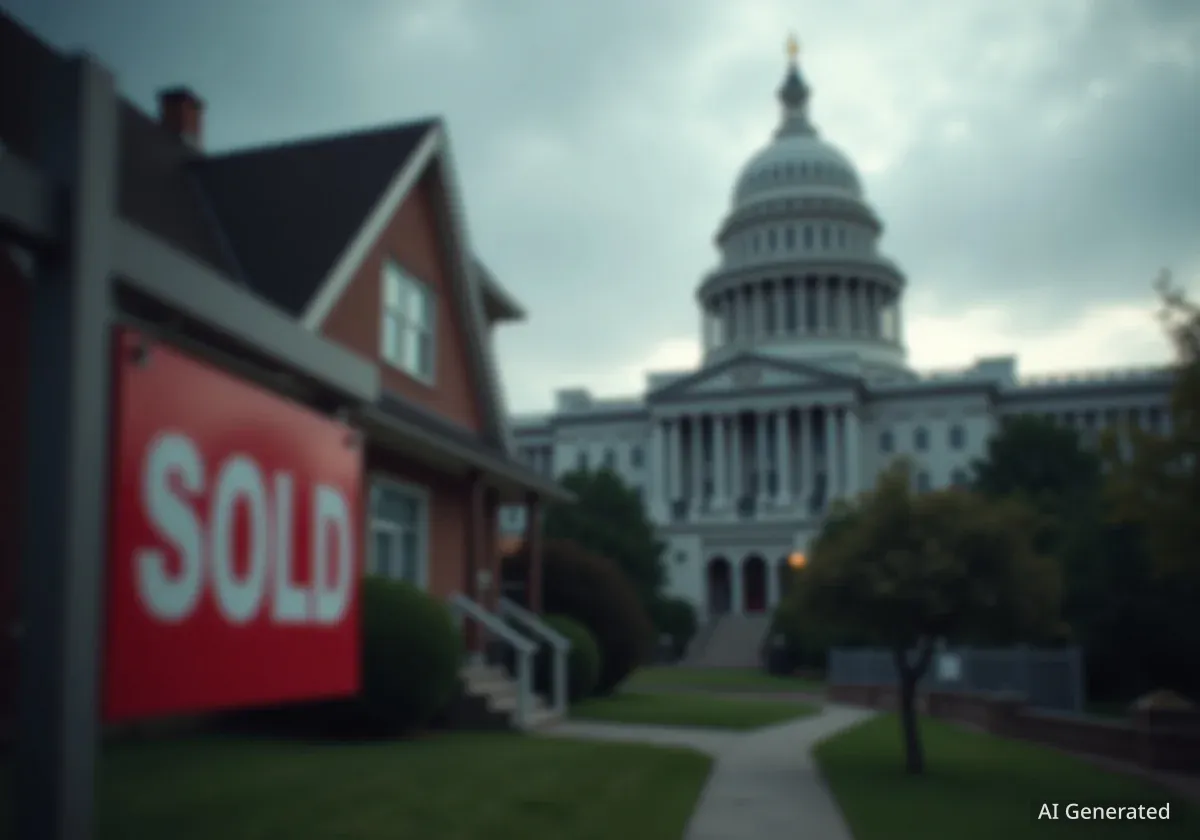The Washington D.C. metropolitan area real estate market is showing signs of becoming more favorable for potential homebuyers, driven by a recent decline in interest rates and an anticipated increase in property listings. As mortgage rates reach an 11-month low, experts suggest that a window of opportunity is opening for buyers who have been waiting on the sidelines.
This shift follows a period of economic uncertainty that caused many to pause their home searches. However, the combination of improved affordability and greater choice in the market could signal a more active fall season, according to local real estate professionals.
Key Takeaways
- Interest rates in the D.C. area have dropped to their lowest point in 11 months, increasing buyer affordability.
- Housing inventory is expected to rise during the fall market season, providing more options for buyers.
- The decline in rates may encourage current homeowners with low mortgages—a situation known as "golden handcuffs"—to list their properties.
- Market conditions remain highly localized, with some properties still selling quickly while others offer negotiation opportunities.
Lower Interest Rates Reshape Market Dynamics
A significant factor influencing the current market is the recent easing of mortgage interest rates. After a period of higher borrowing costs, rates have now fallen to their lowest level in nearly a year. This development directly impacts the financial calculations for prospective buyers.
Lower rates reduce the monthly mortgage payment for a given loan amount, effectively increasing a buyer's purchasing power. This means a home that was previously out of reach may now be affordable, or buyers can secure a more favorable payment on a home within their original budget. In a high-cost market like the D.C. Metro area, even a small reduction in interest rates can translate to significant savings over the life of a loan.
The 'Golden Handcuffs' Effect
Many homeowners who refinanced or purchased during the pandemic secured mortgage rates below 3% or 4%. This has created a phenomenon known as "golden handcuffs," where owners are reluctant to sell and give up their low rate, even if their current home no longer meets their needs. This reluctance has been a primary driver of low housing inventory across the country.
However, as current interest rates decline, the gap between old and new rates narrows. Real estate analyst Justin Noble of Sotheby’s International Realty notes that this change could motivate more homeowners to sell. "With interest rates lowering, we are likely to see this change, which results in an increase of supply," he stated. This potential unlocking of inventory is a critical component of a more balanced market.
Fall Season Brings Increased Housing Inventory
Historically, the fall market in the Washington D.C. area, which typically runs from September through November, sees a notable increase in the number of homes for sale. This seasonal trend, combined with the potential for more homeowners to list their properties, is expected to provide buyers with a wider selection than has been available in recent months.
An increase in supply can shift the market dynamics slightly in favor of buyers. With more properties to choose from, competition may become less intense for certain homes, creating more room for negotiation on price or other terms, such as seller concessions for closing costs or repairs.
Negotiation Opportunities on the Rise
While some well-priced homes in desirable neighborhoods continue to sell within days of listing, often with multiple offers, other properties are staying on the market longer. Real estate experts advise buyers to pay attention to a property's "Days on Market" (DOM). A higher DOM count can indicate a seller may be more willing to negotiate.
This was demonstrated in a recent transaction where a client purchased a D.C. row home for $40,000 less than its appraised value. Such deals highlight that opportunities exist for savvy buyers who are actively monitoring the market.
A Hyper-Local and Complex Market
Despite these favorable trends, experts caution that the D.C. Metro real estate market is not uniform. Conditions can vary significantly from one neighborhood to another and are heavily dependent on the specific property type and price point.
"I get asked on a daily basis what the market is doing and I always say that it really depends on the neighborhood, the property, and the price," Noble explained. This hyper-local nature means that while broad trends point toward a more buyer-friendly environment, individual experiences may differ.
What Buyers Should Consider
For those considering a purchase, the current climate presents a unique set of circumstances. Here are some key factors to keep in mind:
- Increased Competition: Lower interest rates are likely to attract more buyers, potentially increasing competition for the most desirable properties. Acting early in the fall season could be advantageous.
- Financial Preparedness: Getting pre-approved for a mortgage is crucial. It demonstrates to sellers that a buyer is serious and financially capable of closing the deal.
- Local Expertise: Working with a real estate professional who has deep knowledge of specific neighborhoods can help buyers identify opportunities and navigate local market nuances.
- Patience and Flexibility: While inventory is improving, finding the right home may still take time. Buyers who are flexible on their criteria may have more success.
Overall, the convergence of lower borrowing costs and rising inventory suggests a rebalancing of the D.C. Metro housing market. While challenges remain, the conditions are creating a more favorable landscape for buyers than has been seen in some time, offering a strategic moment for those looking to purchase a home in the region.





